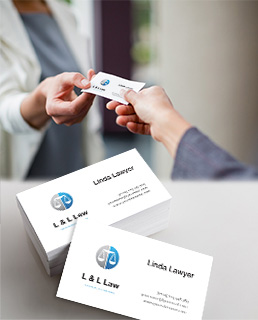You Still Need a Business Card


The business card is one of the most compact business marketing tools in use today. It fits in your pocket, sits in card files, card cases, and desk drawers, you can make notes on it, and it never needs charging.
Cards first appeared in England and France in the late sixteenth century. Bearer cards, calling cards, and trade cards were the three main predecessors of today's business cards. They were early forms of advertising and symbols of status. Present-day cards are also forms of advertising and should be part of your marketing plans.
Three Reasons the Business Card is a Valuable Business Tool
- Not all clients have digital devices. You can't rely on a smartphone for transferring contact information; not everyone has a smartphone, and, if they do, it could be incompatible with your phone. An easy exchange of business cards can be followed up with an e-mail to provide digital information.
- Exchanging business cards is quicker. The quickest and easiest way to swap information is with a business card. Multiple cards can be handed out at a networking event in a short period of time.
- Business cards are essential in international business. Business cards are not only essential in some business cultures, but they are treated ceremoniously. In Japan, exchanging business cards is a ritual and is considered a formal introduction. In India, business cards are also used in social situations and are handed to the person face up with the text facing them. The backside of your card should include your information in the native language.
The Design of Your Business Card
Your business card should be simple and match your other marketing products. Don't use elaborate fonts; instead, use the same font you use on your letterhead. Fit the tone of the design with the nature of your practice. Examples of business cards can be found at the ABA Gallery of Business Cards.
Keep your business card relevant. Include your name, firm name, phone number, and e-mail address. Add your business address if there is room and include a logo if you have one, unless it will make the card too cluttered.
How to Use the Business Card
While we don't follow elaborate practices in places such as Bahrain, where the card can't be exchanged using the left hand and must be looked at before putting it away carefully, we still observe finding the right moment to offer the card. It should follow naturally as a conclusion to a conversation. After the meeting, you can take a moment to write notes on the back of the cards you received to follow up the next day.
While written communication is often paperless, cards are still an essential part of business communication. Keep yours up to date and fresh in a card holder. They will be ready to use when the right moment arrives.
 Roberta Gubbins has served as the editor of the Ingham County Legal News. Since leaving the paper, she provides services as a ghostwriter editing articles, blogs, and e-blasts for lawyers and law firms. She is the editor of The Mentor, SBM Master Lawyers Section newsletter.
Roberta Gubbins has served as the editor of the Ingham County Legal News. Since leaving the paper, she provides services as a ghostwriter editing articles, blogs, and e-blasts for lawyers and law firms. She is the editor of The Mentor, SBM Master Lawyers Section newsletter.
Read More Clear & Convincing Articles
Using the New Enhanced Member Directory
How to Login and Edit Your Profile
Zeekbeek For Lawyers Page—learn about all the new directory features
How to Contact ZeekBeek Support